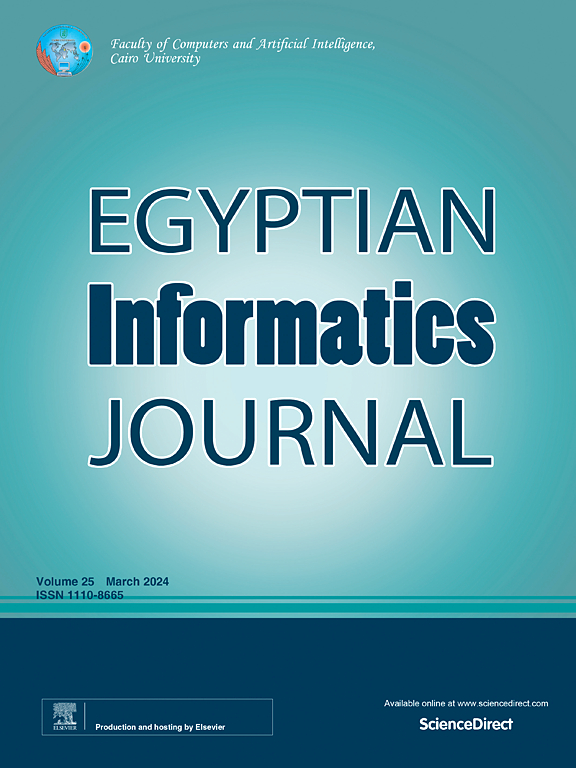Intelligent VANET-based traffic signal control system for emergency vehicle prioritization and improved traffic management
IF 4.3
3区 计算机科学
Q1 COMPUTER SCIENCE, ARTIFICIAL INTELLIGENCE
引用次数: 0
Abstract
Emergency vehicles (EmVs) are essential for saving lives and reducing damage in critical situations, yet their movement is often hindered by urban traffic congestion and inefficient signal control. Traditional fixed-time and pre-timed traffic signals lack the adaptability needed to prioritize EmVs, causing significant delays. This paper proposes an advanced, intelligent traffic signal control system based on Vehicular Ad-hoc Networks (VANETs) and Vehicle-to-Infrastructure (V2I) communication to optimize EmV passage and improve traffic flow. The system dynamically adjusts signal timings in real time, utilizing an adaptive control algorithm that calculates EmV arrival times, adjusts signal phases, and maintains balance to minimize disruptions to regular traffic. By leveraging V2I communication, traffic controllers receive instant updates on EmV locations and traffic conditions, enabling prioritized EmV passage. Simulation results using SUMO and OMNeT++ demonstrate that this approach can reduce EmV travel time compared to conventional systems, with minimal impact on regular traffic. The system also achieves a high success rate of preemption requests, ensuring that EmVs can pass through intersections without stopping. Furthermore, optimization results reveal that the proposed system outperforms Fixed-Time Control Methods (FTCM) with an average of 66.45% reduction in EmV travel times, Flexible Signal Preemption Methods (FSPM) by an average of 57.08%, and Intrusive Signal Preemption Methods (ISPM) by an average of 12.90%. Above findings highlight the potential of the proposed method in optimizing traffic flow, reducing emergency response times, and improving overall road safety. This research provides a scalable, real-world applicable model for enhancing emergency response efficiency in urban environments.
基于vanet的智能交通信号控制系统,实现应急车辆优先排序,提高交通管理水平
紧急车辆(emv)对于在紧急情况下挽救生命和减少损害至关重要,但它们的行动往往受到城市交通拥堵和低效信号控制的阻碍。传统的固定时间和定时交通信号缺乏优先考虑emv所需的适应性,导致严重的延误。本文提出了一种基于车辆自组织网络(VANETs)和车对基础设施(V2I)通信的先进智能交通信号控制系统,以优化EmV通道,改善交通流量。系统实时动态调整信号时序,利用自适应控制算法计算EmV到达时间,调整信号相位,并保持平衡,以最大限度地减少对常规交通的干扰。通过利用V2I通信,交通管制员可以即时收到EmV位置和交通状况的更新,从而实现EmV通道的优先级。使用SUMO和omnet++的仿真结果表明,与传统系统相比,这种方法可以减少EmV的行驶时间,对常规交通的影响最小。该系统还实现了较高的抢占请求成功率,保证了emv可以不停车通过十字路口。此外,优化结果表明,该系统比固定时间控制方法(FTCM)平均减少66.45%的EmV行程时间,比柔性信号抢占方法(FSPM)平均减少57.08%,比侵入式信号抢占方法(ISPM)平均减少12.90%。上述发现突出了所提出的方法在优化交通流量、减少应急响应时间和提高整体道路安全方面的潜力。该研究为提高城市环境中的应急响应效率提供了一个可扩展的、现实世界适用的模型。
本文章由计算机程序翻译,如有差异,请以英文原文为准。
求助全文
约1分钟内获得全文
求助全文
来源期刊

Egyptian Informatics Journal
Decision Sciences-Management Science and Operations Research
CiteScore
11.10
自引率
1.90%
发文量
59
审稿时长
110 days
期刊介绍:
The Egyptian Informatics Journal is published by the Faculty of Computers and Artificial Intelligence, Cairo University. This Journal provides a forum for the state-of-the-art research and development in the fields of computing, including computer sciences, information technologies, information systems, operations research and decision support. Innovative and not-previously-published work in subjects covered by the Journal is encouraged to be submitted, whether from academic, research or commercial sources.
 求助内容:
求助内容: 应助结果提醒方式:
应助结果提醒方式:


